Component 2 Research
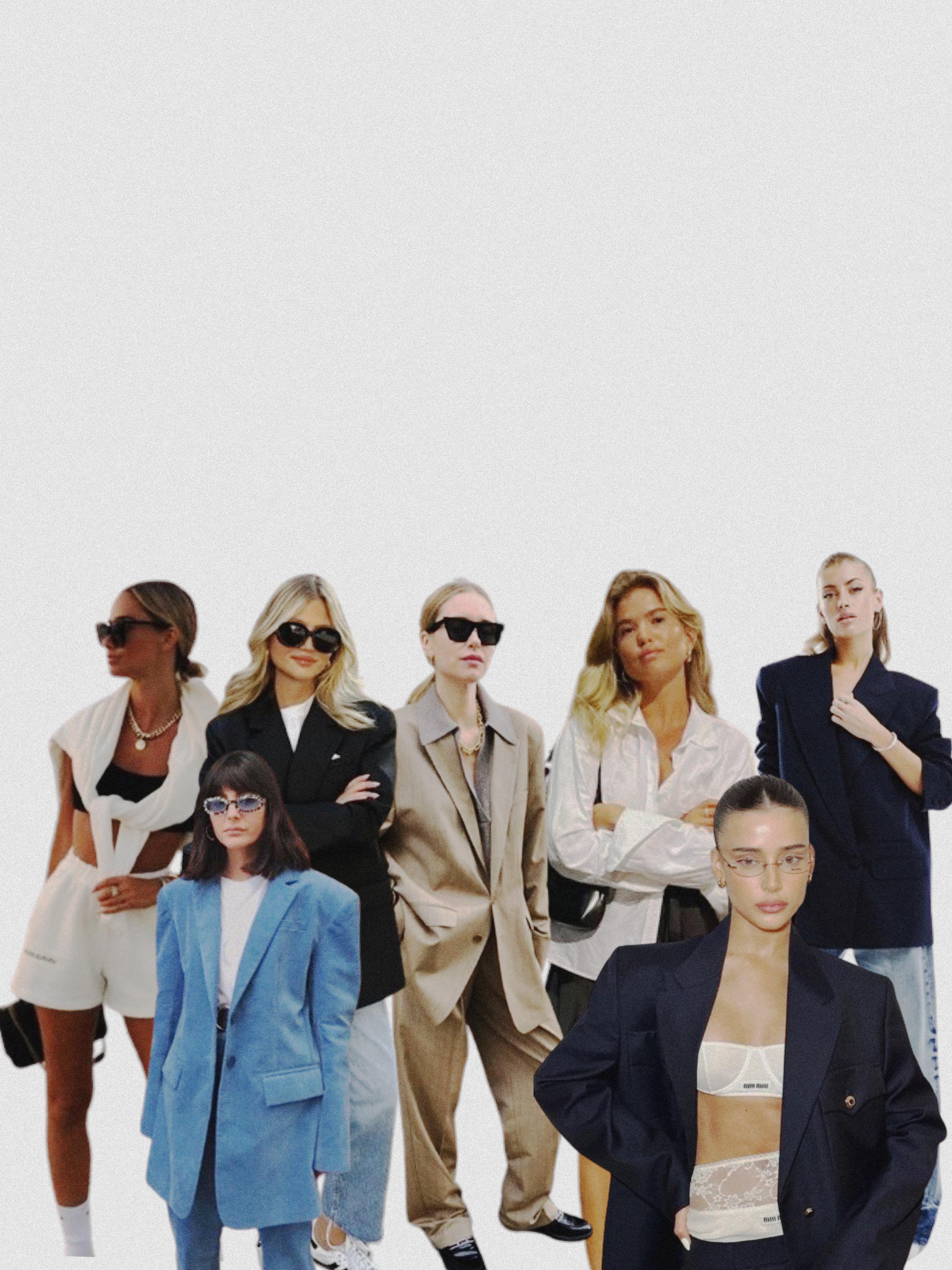


The market level I have chosen is the influencer market. I believe this market level is a good fit for me as it allows me to entertain a multitude of different paths and opportunities.
My personality type is a campaigner personality which is known for having a passion for life and a whealth of ideas, interests and hobbies. My personality type wants to add value to the world, build a community and express their creativity through their work. I feel like the only market level for me to feel fulfilled out of life would be the influencer market.
I would say I excell in things I enjoy and cannot learn enough about the subject I’m interested in and like to take things to a professional level (this is due to my personality type also being obsessive). However, I have an urge to share my knowledge to the world and create a community of people bettering themselves when they come onto social media instead of them feeling worthless.
Most importantly I believe I will be a good fit for the influencer market because of my experiences in life so far, my life hasn’t been a straightforward ride, as I’ve had two degree/career changes in the space of a year, I’ve also been in a terrorist attack which left me rebuilding who I am as a survivor and how my life has changed through that. Due to my story, I feel I would be successful in this market level as I have substance as a creator, I have a strong personal brand in terms of uniqueness and other’s who have been on a similar bumpy path to me can resonate. The authenticity I can bring to the market will work in my favour when working with brands as hopefully I will be viewed as a valuable partner for promotion, as I want to build genuine relationships with my audience and engage with them on a deaper and rawer level.

Worklife balance/Flexibility: being an influencer offers flexibility and freedom in terms of work schedule, content creation, and creative expression. Influencers have the freedom to pursue their passions, interests, and hobbies while building a successful career.
Community building: Influencers have the ability to build communities around their niche interests or areas of expertise. They can foster meaningful connections and conversations among their followers, creating a sense of belonging
Media Exposure: Successful influencers may attract media attention and coverage, leading to interviews, features, and profiles in traditional media outlets. This exposure can further elevate their status, increase their visibility, and attract new opportunities.
Originality: Many influencers that are online now are very similar in the way they create, edit and consume content This leaves little room for originality and can mean the market is oversaturated
Trolling: Negative comments is something that comes with the job as you can’t appeal to everyone. However, you have to have a hard shell to put yourself out there and accept the criticism that comes with it.
Platform Dependency: Influencers rely heavily on social media platforms for their visibility and reach. Changes in the algorithms, policies or the emergence of new platforms can disrupt their audience engagement and risk income
Networking: Influencers often have the opportunity to network with other influencers, brands, and industry professionals. These connections can lead to collaborations, partnerships and new opportunities for growth and exposure.
Access to education: Influencers can leverage their expertise and knowledge to create educational content, online courses, workshops, or coaching programs, this is sometimes provided by brands. This allows them to share their skills with their audience.
Business venture: A lot of influencers who are successful are given the opportunity to start their own brand as they have the suppport of their following who will often buy into whatever the influencer has created to support them. There’s little risk when undergoing a start up brand as an influencer.
Burnout/ Mental Health: The pressure to constantly create content, maintain an online presence, and engage with followers can lead to burnout and mental health issues. Influencers may experience stress, anxiety, comparison fatigue, and feelings of inadequacy.
Security Risk: Sharing personal details and experiences online can compromise an influencer's privacy and safety. They may be vulnerable to online harassment, cyberbullying, stalking, or even physical threats. Maintaining boundaries and implementing security measures is crucial to mitigate these risks.
Job Security: Influencer careers are inherently uncertain, and there's no guarantee of long-term success or stability. Factors such as changing industry trends, shifts in audience preferences, or personal circumstances can impact an influencer's career trajectory and income potential. Influencer’s need to be more adaptive to change for futuristic advances in terms of AI
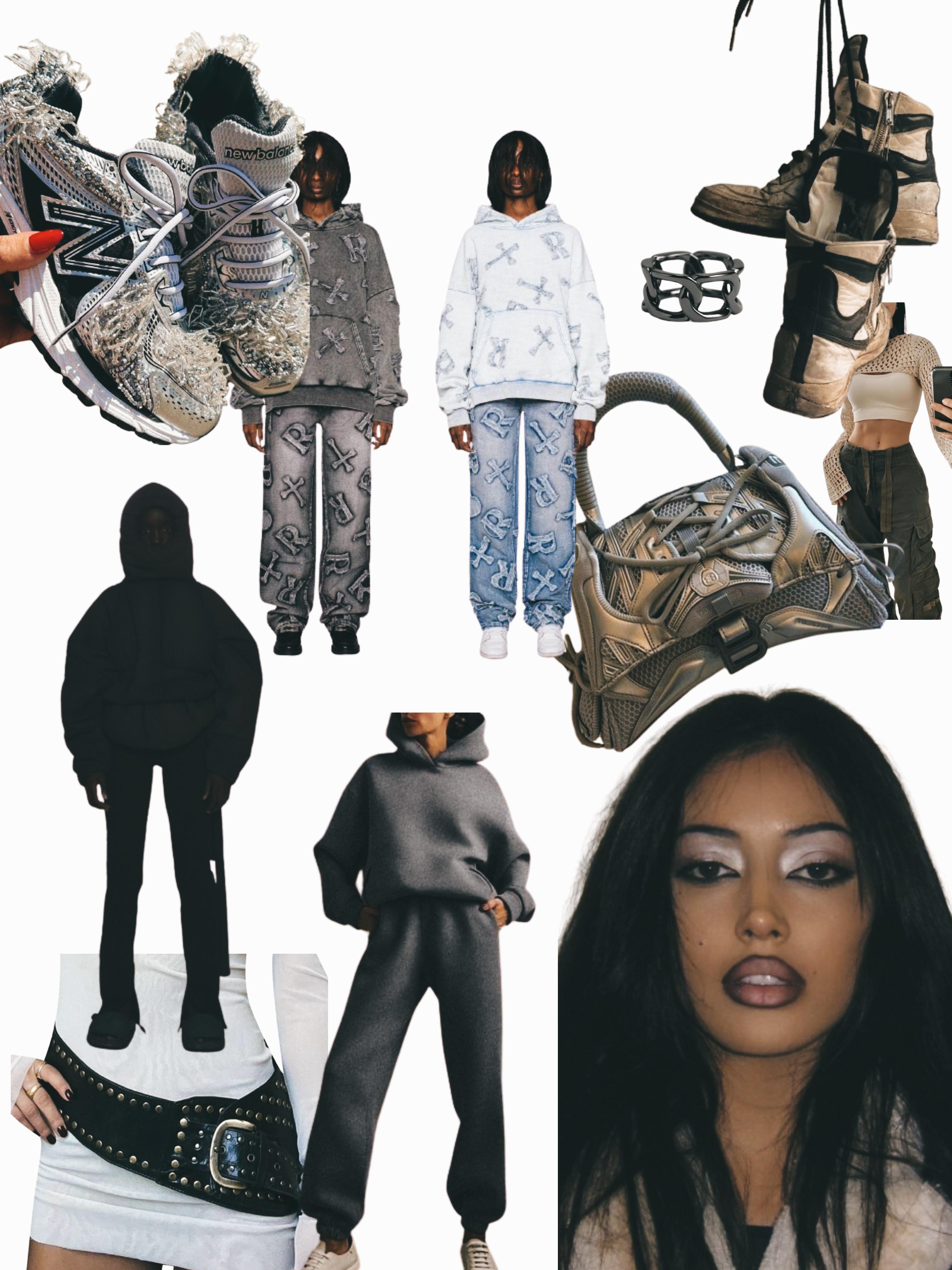
Not afraid of colour Collar Timeless
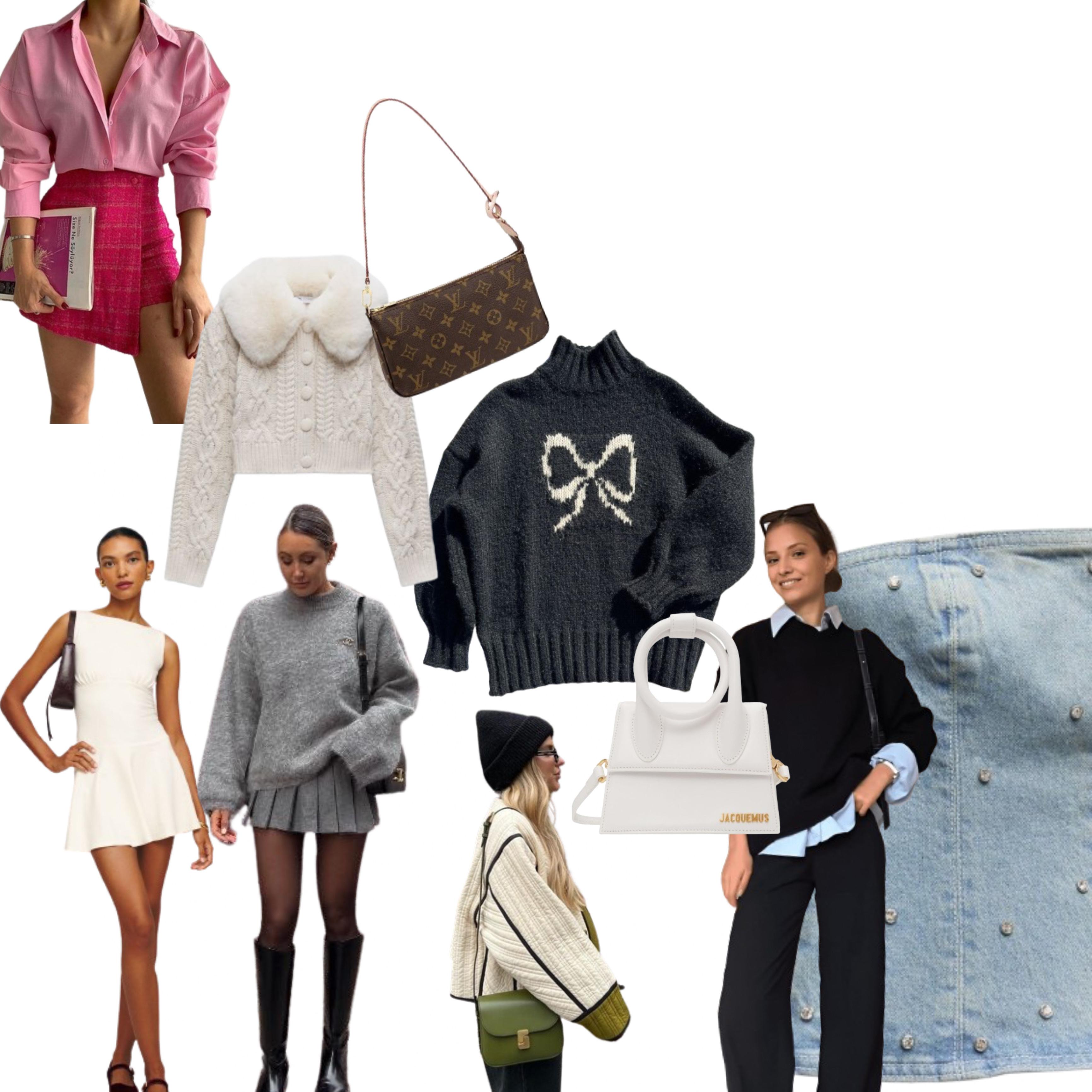
What is a reason why you follow influencers online?
Ellie: Lifestyle trends, how to make certain foods, meal inspiration, workout routines, hair care products, fashion Wide range of aspects.
Erin: Fashion focused purely for occasion inspiration
Do you feel a connection to them?
Ellie: I don’t view it like that, I don’t resonate with them on a human level more viewed as a transactional thing. The influencer gives and I take. I like to take a look into their life more as an interested backseat. I enjoy watching GRWM’s as a form of entertainment
Erin: No to be honest I don’t feel connected to influencers I think it’s purely because I don’t view them as real anymore, more of a sales tunnel which people get sucked into. I would like to feel connected to more influencers they just need to be more relatable instead of flaunting their cash
Ellie: Not jealous because I love my own life but sometimes I wish I received some of the PR products they do.
Erin: I believe it’s to do with your mindset You can’t wish you had it if you never tried it If I tried to be an influencer and failed it’s fair to feel jealousy but unless you’ve tried to be one you shouldn’t feel jealousy. Influencers who have started from nothing and didn’t come from money, how can you be jealous of that when they’ve worked for what they’ve got
Ellie:It has potential to be if you are a self conscious person and had a bit of a shit life, following influencers would make you feel worse about it as they are viewed as people who post pics and make 10x what I make a year.
Erin: I think people make it toxic by the way they view things, if you have a positive outlook on social media and use it for a positive reason then I don’t think its toxic Although, when you’re living on the breadline and can only afford the bare minimum and are viewing influencers unboxing thousands of pounds in PR daily that’s being wasted because its way too much for them to even get through, thats when it starts to piss me off because they’re no longer relatable
Erin: So many influencers have rich parents and have never struggled in life. They’ve had access to personal trainers, nutritionists, plastic surgeons and have the money to change anything about their life they don’t like. So they’re bound to grow a following based on physical looks because they are seen to be physically attractive and they go on nice holidays all the time and they can afford decent camera equipment. Therefore brands will work with them because they have the reach. = Instant influencer. These type of influencers are just lucky that they were born into money which has allowed them to do it. I know not all influencers are like this but a lot are. I don’t think just anyone could become an influencer and start recording themself on tiktok I know I definitely couldn’t, you have to have a certain personality type and have a lot of confidence.
Ellie: Erin, but then surely those people don’t deserve a platform if they’ve gotten work done if they haven’t been honest with their audience or have lied about plastic surgery because they are putting out a negative influence to their followers and setting unrealistic standards for young girls following them wishing to be like them. In my eyes what makes an influencer should be someone who’s got good morals and is using their platform to spread a good message and making a positive impact to society. It should be less focused on looks and more focused on how they can make a change and build a solid connection with their audience and the viewers have trust in what they’re saying. Instead of just posing in a bikini on a beach and getting thousands of likes that isn’t benefiting anyone.
Ellie: It could definitely affect my mental health if I allowed it too, spending too much time on instagram can suck you into thinking your life is rubbish after seeing how influencers live, but it’s just not real life and it’s something I need to tell myself more.
Erin: It's definitely responsible for the way people view themselves, I’d say more people hate themselves now due to influencers and are influenced by influencers to get work done which is obvious due to a 70% increase in the non surgical procedure industry year on year.
Erin: I prefer the influencers who didn’t set out to be an influencer, the ones where it happens organically are my favourite as they feel more real to me For example, Max Belegday and GKBarry. These two started in Covid times by just posting videos and by chance they blew up and turned into influencers that brands wanted to work with as they knew they were viewed as relatable and real.
Ellie: What I believe to be a positive influencer you have to be yourself, so your audience can relate and connect with you Also, I prefer to follow influencer’s who actually teach you something, like for example I follow Bambidoes beauty and she teaches you skincare and how to look after your skin as you age. More educational content is what I am after.
Erin: No, I don’t I feel like a lot of them are full of shit they don’t actually like the products they’re promoting and it’s almost turned into a trend within influencers to promote the same product as it can be used as a selling point that everyone is talking about it etc. A good example was that beauty crop primer that was trending within the beauty influencers a few months a go. My whole tiktok feed was full of people promoting it on TikTok Shop. It got really annoying and actually deterred me from buying the product. The same with Welda Skinfood.
Ellie: I have the same 4 influencers who I trust for recommending products and I do support them when they do ads because I know the product they’re advertising has been tried and tested by them I do feel let down by influencers because a lot of them are blinded by the money.
This is just one of many conversations I’ve had with my friends over influencers and the reliability of them. I agree with what they said especially about the influx of ads from TikTok due to TikTok shop. TikTok shop works on commission so when an influencer links a product on tiktok it allows viewers to buy through the link and they will receive a percentage of the product cost. TikToks current guidelines with linking products is that TikTok will automatically put ‘AD’ under the video even though the influencer isn’t working directly with the brand they’re promoting due to profiting off of TikTok. Because of this, if an influencer does genuinely like a product and want to share it with their audience by tagging it, some may question their authenticity around it as the video is labelled as an ‘AD’.
I also agree with Erin’s view on what makes a positive influencer and what makes a negative influencer. I too prefer to engage with ‘influencers’ who never got into the industry by accident and fell into the job. The ones who gained attraction online through their good morals and personality. I think a lot of people feel these individuals are more trustworthy as they never encountered the fame or lifestyle that they have today and have remained humble. Covid was a big part of influencers coming up. A lot of people were on TikTok as a result of being at home all day hence the influx of people blowing up on TikTok because there wasn’t anything else to do. TikTok was used as a sense of community when people were at their lowest as it was their only form of socialisation.
I too believe that you can’t blame all influencers for how you feel by viewing their content. If you feel a negative way about your life or body after viewing content online, I personally believe that influencers aren’t responsible for your own self esteem. Social media is mostly about what people have and what’s going well for them which only amplifies everything that's going wrong in your life. People use their social media profiles to project a perfect image with carefully chosen photos with a lot of editing to create this perfect world. That being said, I believe when viewing content on social media you should give yourself constant reminders that what you see online isn’t real life and someone else’s success doesn’t limit your success nor does it determine your self worth. I am an example of this. I used to constantly compare myself to people I saw online and got obsessed with influencers out of jealousy of their lifestyle and success. After a long journey with self worth and figuring out what makes me happy, social media became less of a need. I started to view it as a form of entertainment which I could limit.
In terms of mental health, I think social media, TikTok especially is trying to change this with some creators recently showing the minimal work they’ve had done. The whole point of the trend is to show viewers that even when it doesn’t look like somebody has had work done, they still could have. This is a really positive move for social media as it shows the realness of creators that a younger audience would never have realised.
‘You’re so naturally pretty’ TikTok Trend

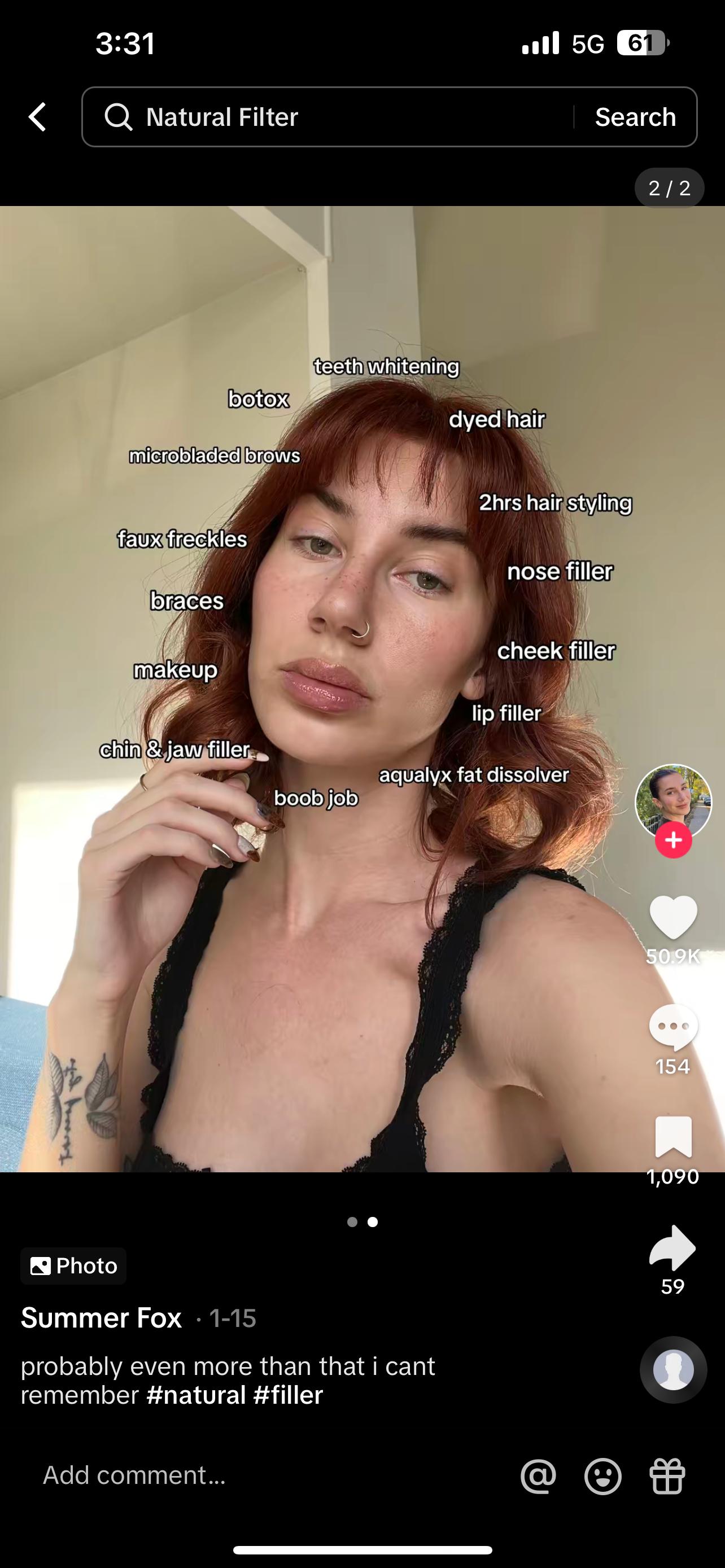
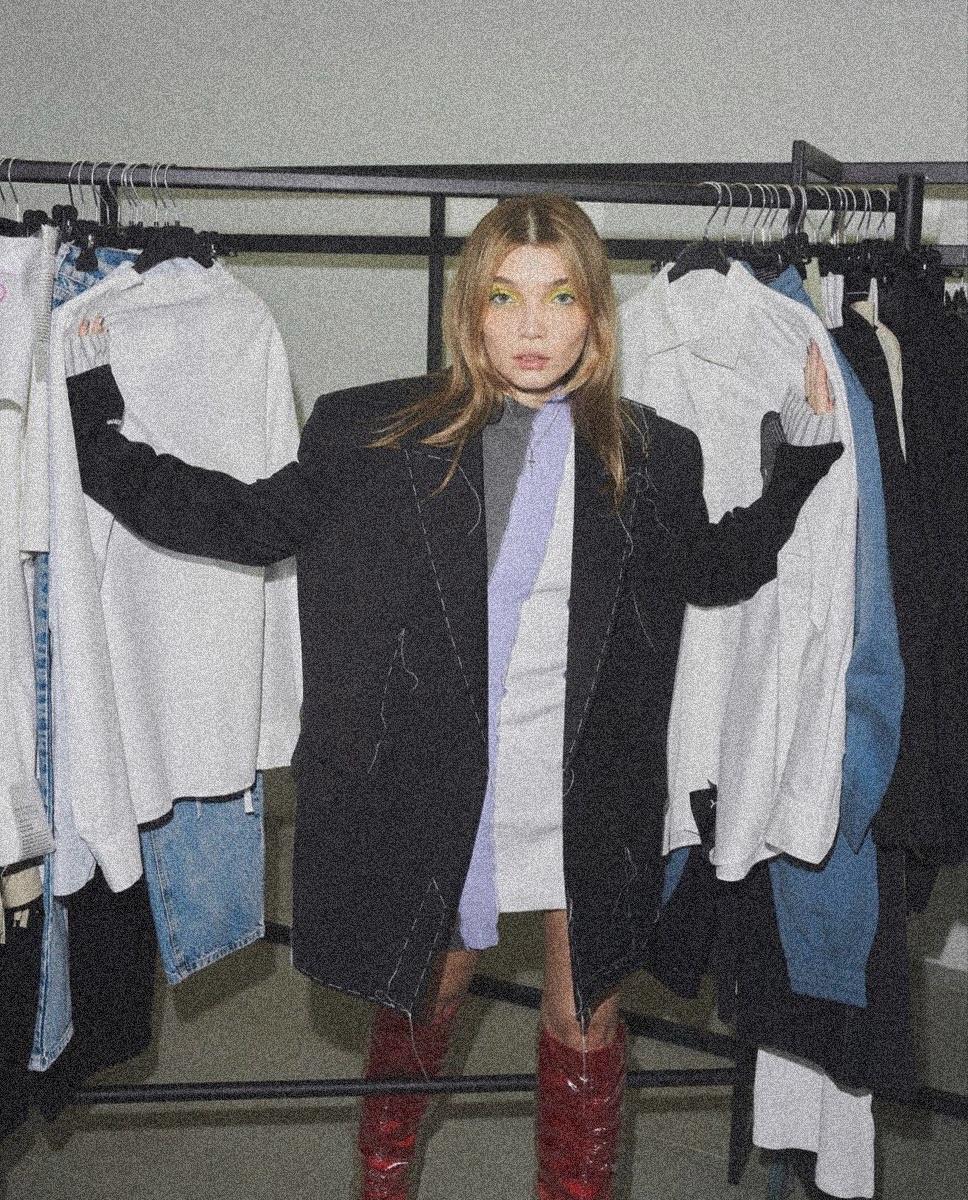
My target audience for my brand is Gen Z. I believe this generation is seen as a lost generation which needs guidance. Gen Z values social interactions more than any other generation before them. They were raised in the age of social media and have a need to be constantly connected to people that they have in their life. In terms of business, Gen Z is the market that current brands want to be targeting, with their buying power estimation to reach £143 billion in the US alone, it is a significant market to get on board. Furthermore, this generation is the most active on social media platforms which means they can make or break a brand’s reputation. This generation purchases a product that creates an emotional connection to them and they’ll buy into a brand based off the brand’s story, morals and buying experience.
Gen Z buys into a brand that creates an emotional connection with their audience. It has been seen to be the most successful way of targeting this generation. This can be done in multiple ways, creating an emotional connection can be done by community building, for example the clothing brand Hollister created the Hollister Collective, a community where customers can share their photos and stories, giving them a sense of belonging and relatability. It started with a dozen of popular TikTok creators who began with various content ideas in-store, like live broadcasting to creating custom music for other videos.

Another way I want to provide an emotional connection to the gen z audience is through making each individual viewer feel special. Asos did this well when they introduced user generated content to their brand. These were called ASOS insiders, their job was to influence everyday social media users to shop on ASOS. The influencers on the scheme didn’t have thousands of followers like influencers we know today, they were genuine loyal consumers of ASOS who believed in the company. They were one of the first brands to use User generated content on their social media and the sales came pouring in. The breakthrough came when the company realised that consumers don’t want to see clothes advertised by models they want a true representation of what it will look like on a normal person that isn’t a model. This is definitely something I want to take into my lifestyle brand.
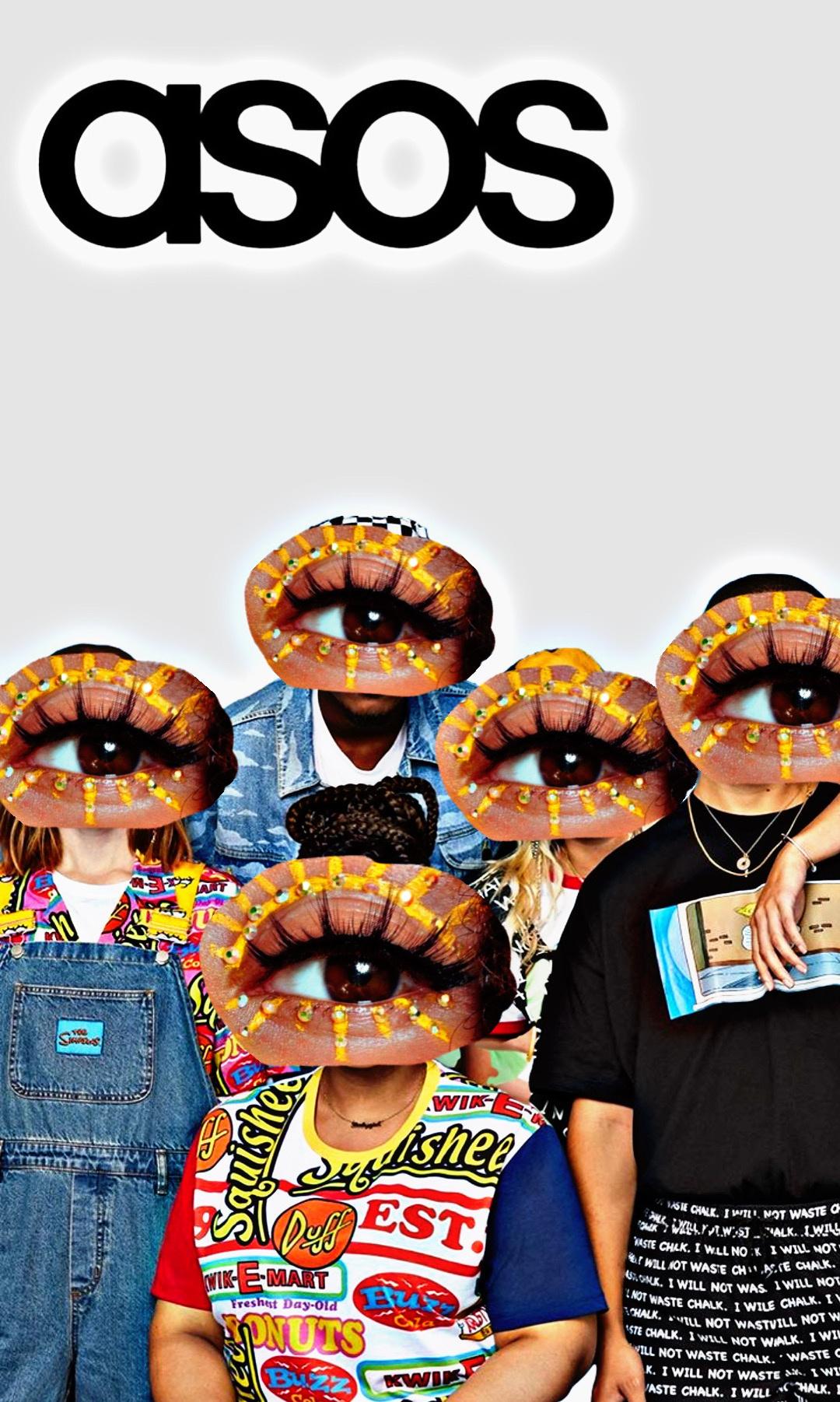
Tiktok users are getting increasingly more interested in education over dance videos. Recent studies show that an increasing number of Gen Z now turn to social media as their first-choice search engine, favoring platforms like TikTok and Instagram over traditional search engines like Google, ushering in an era where educational content on social media is the go-to destination for curious minds.
This trend is fueled by the increasing demand for easily accessible and diverse educational resources.
The rise of educational influencers and content creators on platforms like YouTube, Instagram, TikTok and LinkedIn has played a pivotal role in this evolution These influencers leverage their expertise in various fields to create engaging and informative content that resonates with their audience. From tutorials on diverse subjects to in-depth analyses of complex topics, these creators are making education more accessible, relatable and enjoyable. The visually appealing and easily digestible formats, such as short videos and infographics, have made learning more entertaining, sparking interest in a wide range of subjects.
The ease of access to information, the personalized learning experiences, and the sense of community that these platforms offer are redefining education, making it a more inclusive and engaging endeavor for individuals worldwide. This trend not only empowers learners to acquire new skills and knowledge but also opens up opportunities for content creators, educators, and experts to share their passion and expertise with a global audience, driving positive change in the realm of education.
Gen Z have made “google” a verb, but Instagram and TikTok are now the preferred search engines for Gen Z when seeking local results or researching fashion trends. According to a new study of 1,002 U.S. consumers, Google is now in third place for 18 to 24-year-olds.
For that emerging Gen Z population, Instagram is tops: 67% say they use Instagram to search. TikTok is the second choice: 62% of the 18 to 24 demographic search there, while Google is in third at 61%.
The survey did not include younger generations, but if it had, researchers likely would have found that TikTok and Instagram enjoy even more dominance. As far back as 2022, Google disclosed that 40% of youth use TikTok or Instagram to search for a place for lunch rather than Google or Google Maps, and those trends have continued.
I decided to do my own study on where individuals go to when sourcing information or need answers to a question depending on their age range. I am lucky that my mum works in a primary school so managed to gather data from a gen alpha demographic, gen z demographic by asking friends and mutual friends and finally Millennial individuals who are 30+ which I gathered through my work colleagues. I asked 10 people of each generation and collated the data below. As you can see, Instagram won by a mile over google with Gen Z’s, followed closely by gen alpha, and lastly with Millenials coming last. This is something to keep in mind when it comes to which platfrom I want to use To showcase my brand and which resonates most with Gen Z.

The same way Gen Z determines what brands they like and what brands they don’t, they will do the same when choosing what influencers to support. For example, if an influencer doesn’t have the same values and beliefs the Gen Z viewer has in terms of diversity or inclusivity then the gen z individual will not support them no matter how much they like them for their content creation. The same applies if an influencer was to portray this fake story online but then gets caught up in a scandal where they have gone against their own values. This may lead to them being cancelled. Cancelled was a word created by gen z to use for a public figures who have done something to offend a group of people, expressed something that’s controversial or conducting themselves in a way that it’s unacceptable. A lot of people may argue that cancel culture is a negative way of making said person responsible for their actions. Social media especially can offer a global stage for discussion, activism and public shaming. Platforms like X (Twitter), facebook and instagram amplifying voices but also accelerate and intensify outrage and the cancel culture phenomenon is making it easier for large groups to coalesce around a cause or against an individual with unprecedented speed and scale.
If you view cancel culture from a psychological perspective, Dr Brenner a PhD graduate in Psychology has an interesting point on cancel culture and how it limits dialogue, ‘one of the critical concerns about cancel culture is its potential to stifle open dialogue and mutual understanding. In its most aggressive form, it can create an environment where individuals are hesitant to express opinions or engage in discussions for fear of being ostracized or ‘canceled.’ This fear can lead to a homogenization of viewpoints, where only the most widely accepted opinions are voiced, while minority or controversial perspectives are silenced…..This lack of space for understanding and change can be detrimental to mental health, as it denies individuals the chance to learn from their errors, grow from their experiences, and develop a more inclusive and empathetic viewpoint’.
The type of culture we’re living through currently has turned tiktok into this false reality. I believe this is due to influencers on tiktok being terrified of being themselves and speaking on their beliefs in case they get cancelled by their audience. The influencer Elle Darby got cancelled after tweets she made when she was 17, 10 years prior to her being viewed as a public figure. She was made to take 6 months away from her platform from which she lost nearly half of her 650k following. The amount of hate she received online led her to employee 24 hour security around her home after she received death threats. I feel like after each influencer gets ‘cancelled’ it emphasises the feeling of ‘that could happen to me’ and builds a wall against reality and the truth.
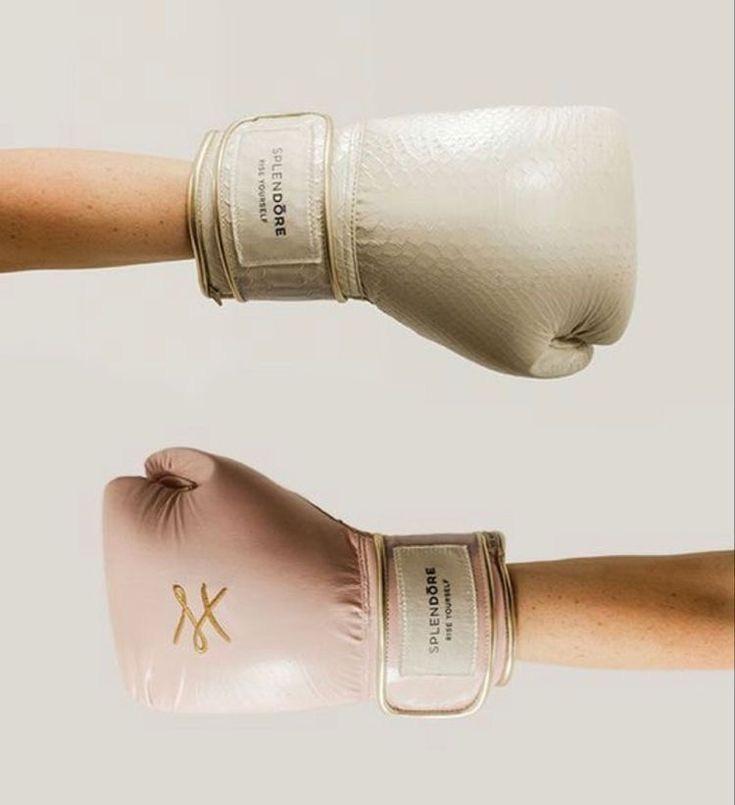
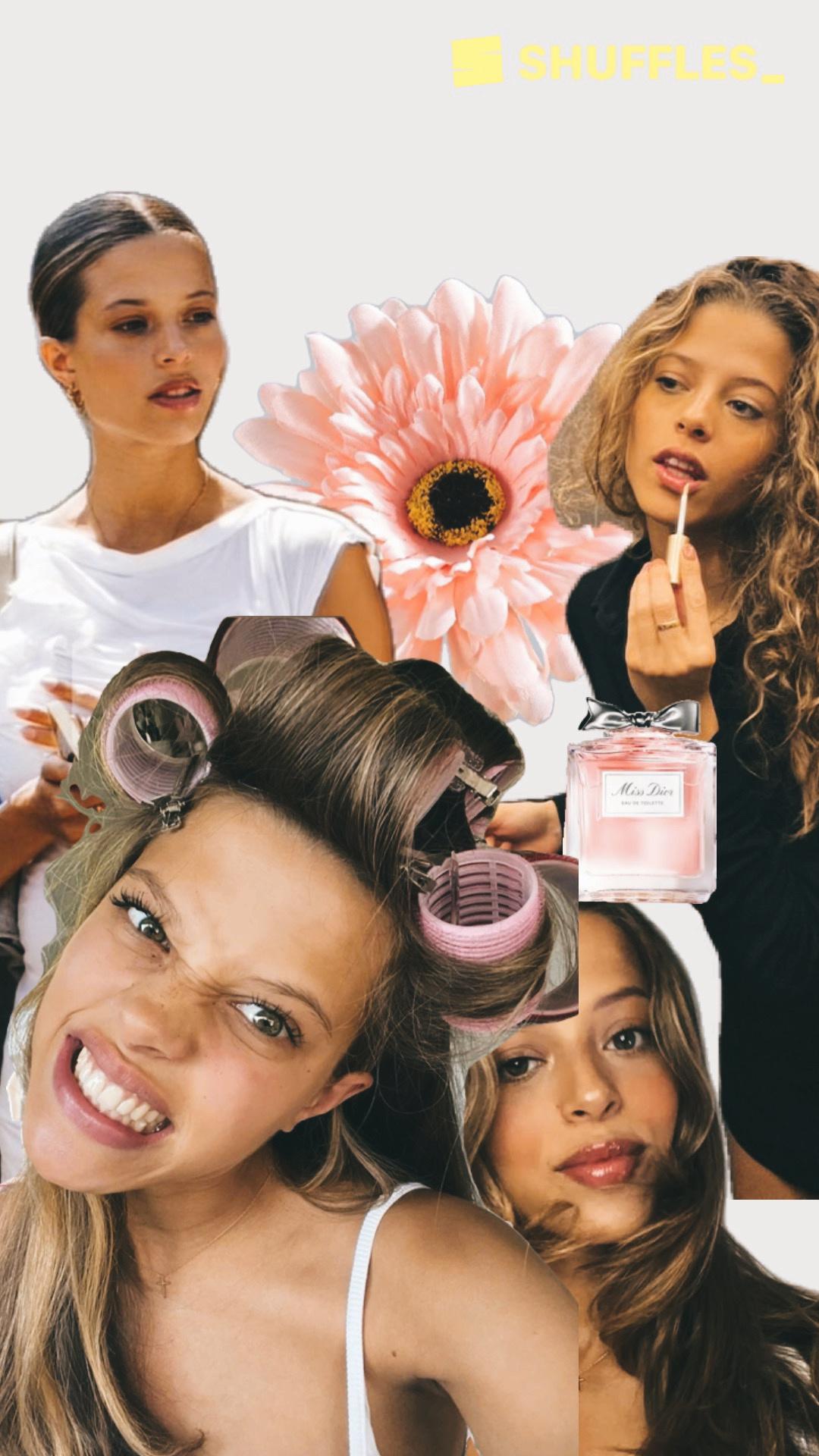
Me and Zaar share the same aesthetic
Zaargoedmans is a Dutch content creator who has a huge following on social media. Even though she is from the Neverlands, she has a huge UK based following due to her style of content. She does a lot of carousel TikTok’s with English text which has acquired a lot of British following. Zaar is a typical Pinterest girl who’s life is very aesthetically pleasing. She identifies as a girly girl who loves self care. She has a cult following of other pink loving Pinterest girls who enjoy watching her life. She buys into brands such as Rode, Gisou, Dior beauty and Lancôme. She buys into these types of products for the experience these products offer and the aesthetic that they all share. She is more of a luxury influencer who works with high end brands but won’t work with a brand unless they fit her personal brand lifestyle of feminine luxury.
What I admire about Zaar and one of the reasons why I engage with her content is that she creates a realm of different content for example she creates hair tutorials and makeup GRWMs and shows her skincare routine often. Her most frequent form of content is image carousels as I mentioned earlier in which she uses product placement to sell the lifestyle that she lives, for example a lot of the brands she has, resonate with the same audience as Zaar. The brand Gisou, Dior beauty, Lancôme, Dyson air wrap to name a few all target the Pinterest aspiring lifestyle, with Zaar being the perfect muse as she is seen by gen z to be the mother of this aesthetic.
Similar to storyboard images
Marketing style is product placement as the products sell themself if she is using themDoesn’t need to gain views by engaging with trends as she is liked and admired for being her.
Zaar tells stories majoritly on TikTok by showing her daily life. She doesn’t engage with trends as she doesn’t need to. People engage with her content for to watch and admire her lifestyle/content. She gets across her personality by doing ‘get ready with me’ style content and day in the life. She also targets two different markets by connecting to both English and Dutch audiences with her switch up of languages.
Zaar doesnn’t just create content indoors, she films her life which is whatever she’s doing that day, although if it isn’t within her brand it won’t get featured.
Zaar is also a big believer in God and lives her life with Christianity at the heart of everything that’ she does and stands for. I feel like this is good as it raises awareness for the religion but by also saying to her audience ‘religion doesnt stop you from achieving your dreams’
This is similar to howI live my life, I enjoy having someone in my head to speak to and to ask for signs that I have made the correct decision in life.
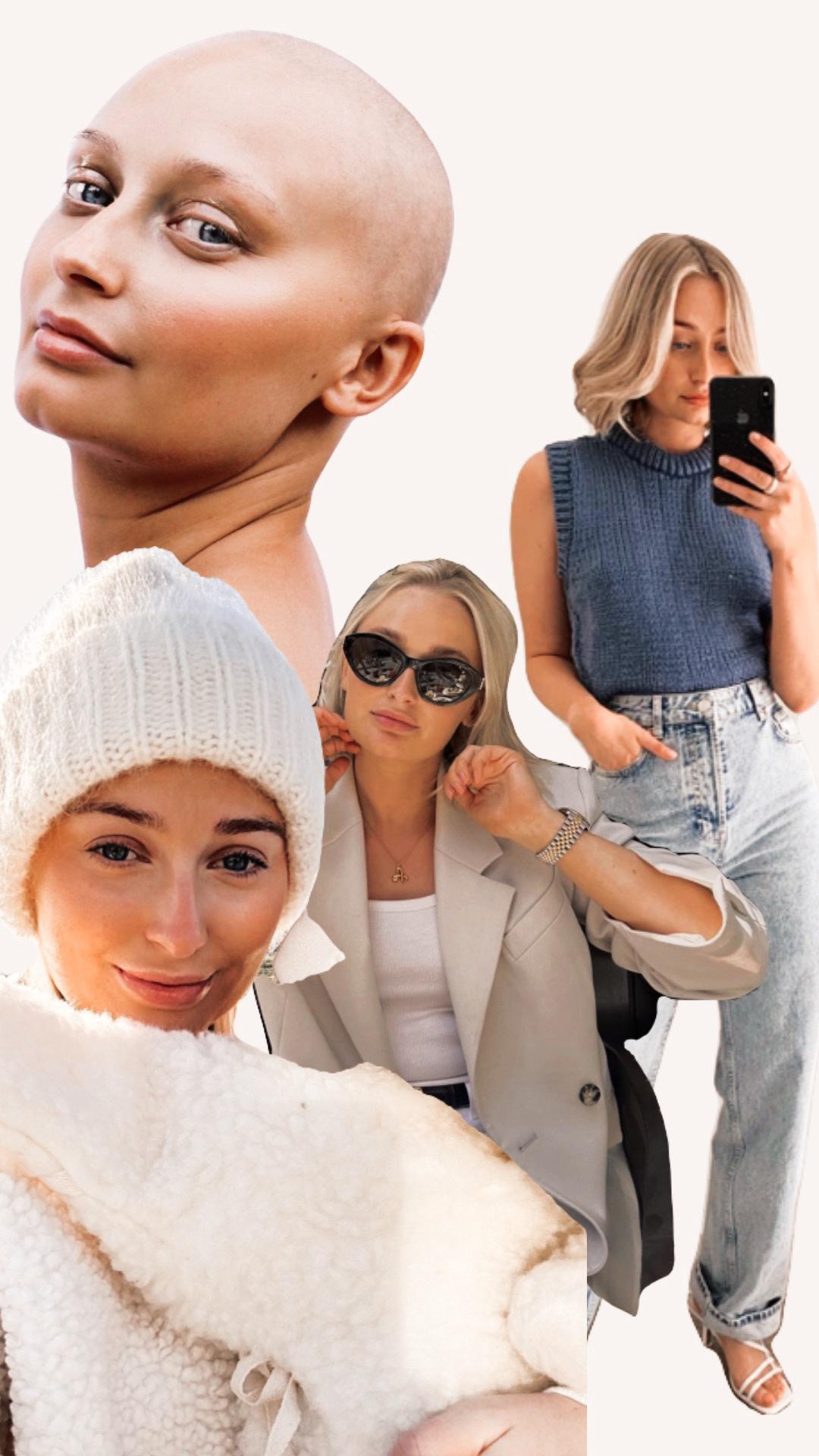
Olivia rose is a UK based influencer and stylist who has a loyal fan base. Olivia’s content is a mix of fashion styling, vlogs, and mum life and life updates etc. She posts most of her vlogs and more chatty style content on tiktok as she uses tiktok to connect with her audience and given them the behind the scenes scoop into her life, whereas on instagram she posts ‘the end product’. She connects to a type of audience that enjoys the luxury, minimalistic aesthetic and home decor and is enthusiastic about health, by drinking matcha and going to Pilates. Brands that share this consumer type are Charlotte Tillbury, Jo Mallone, Adanola, Refy beauty, Because of Alice and many more timeless lifestyle brands. Olivia’s personal styling vibe is creating a capsule wardrobe and focuses on styling the pieces she buys instead of re-purchasing.
Olivia is a stylist and has a virtual styling company where a client will ask her to create a style based on an occasion. She built this in lockdown as clothes were her passion and she felt she is giving back to her following who have admired her style since she started. She uses this business as a way to connect and help her loyal following In 2018 Olivia suffered from cancer, she had three rounds of chemo that lasted 16 months. She has gone through a life changing event similar to what I have gone through. She did a post of how she feels to be entering this new lease of life that she feels and there are multiple aspects of it that I relate very much to.
Below is a snippet of an instagram post Olivia did on her cancer free anniversary. It was of her looking back over the last year of being cancer free and her experience. I have underlined certain things she says that I relate to having gone through a similar situation with thr Manchester attack.
I was set on going away for university and studying Criminolgy as it was something I believed I always wanted to do before the attack, I soon learnt that wasn’t the case and quickly through myself into a PE and Teaching degree as I felt I had to make a decision now as i hated the feeling of not being in control of my life path
After the attack I tried my hardest to return to my life as normal, the things I enjoyed before no longer brought me joy, I didn’t know who I was anymore
A year has passed since the day I felt I was ‘set free’ into my new life. I had a fire burning in my tummy, a huge appreciation for life, and a whole new outlook. I am actually a bit lost for words right now. I felt lost in myself. So I through myself into work, I worked about 16 hours a day trying to make it as a successful fashion influencer who had a story, but why is it taking me so long? Why is that person growing and not me? So then I tried a relationship, made it my everything but then forgot about me, there was alcohol, I went through a stage of partying every night, that’s what I liked before all of this wasn’t it? All I was doing was numbing myself from myself. Self love is so much more than a face mask and bubble bath, it’s about accepting your experiences and allowing them to develop you as the person you are today. I want to show people that you’re life doesn’t end when you go through something like this
I spoke about this in Component 1 about how I had a wake up call to be more optimistic about life which I am so happy about as it could have gone the complete other way I too struggled with the feeling of being lost, I felt like I had to rebuild what I enjoy doing and figure out what I don’t I needed aspirations again
ThisiswhatIwanttodo,toignitethelight insideofthemtoseetheworldthroughrose tintedglassesasitisabeautifulthing,and godwantedyouonthisearthforareason.
ThejourneythatIhavebeenonupuntil nowhasbeenexactlythis,tryingto understandandlearnaboutwhoyouare asapersonandallowyourselftimeto slowdownandjoylife.
Different forms of marketing that I can bring to my work
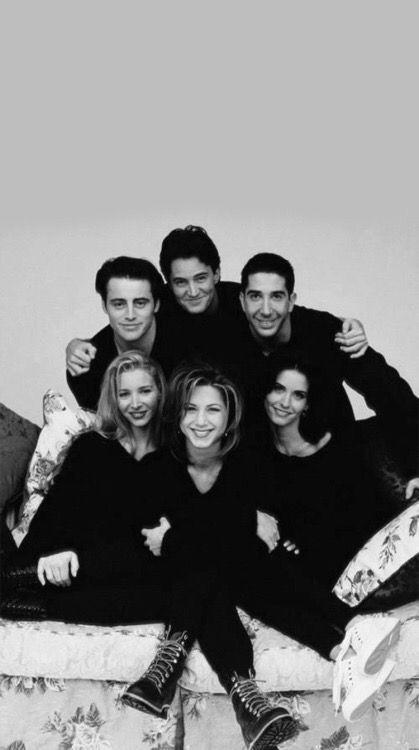
Product placement is a modern merchandising strategy for brands to reach their target audiences without using overt traditional advertising. Embedded marketing is another term for product placement or DTC marketing. Since the product is embedded in another form of media. This placement of branded goods or services is often found in entertainment, namely in movies or TV.
In most cases, these large brands will have paid large sums of money for their brand to be placed in these movies. While the product placement cost can be high, the payout can be even higher for the brand. It’s reported that Hershey saw a 65% increase in profits during E.T.’s movie run. Similarly, Mini Cooper car manufacturer BMW saw a 22% increase in Mini Cooper sales the year after the heist movie The Italian Job featured a fleet of more than 30 Mini Coopers.
Erdoga in 2010 suggested that if an endorser of a product is trustworthy or attractive, these qualities could be transferred to the product itself. This sort of technique could be applied in television and movie based product placement.
Despite product placements being a less traditional method of advertisement, there are considerations to how ethical it is. Product placements could be considered to deceptive, as the viewer may not necessarily be expecting adverts during the time for example a film is on. As often during advert breaks people choose not to watch them, either glaze over or go out to make a cup of tea. Hackley, Tiwsakul & Preuss (2008), suggest that product placements should be regulated, to how many products can be placed per show or film.
I personally think that product placement is an effective method of advertising, in a more subtle way than regular commercials.
Social media influencers don’t need to be a household name or reality stars to make an impact on product placement. For example an American marketing company founded by Jason Sadler took the traditional idea of product placement and flipped it on its head. Instead of tacitly introducing branded goods into the story lines and plots of movies and television shows, which was common in 2009 for product placement, Jason Sadler produces constantly revolving comedy sketches that focus on a variety of different advertisers whilst wearing a T-shirt embellished with a different advertiser’s logo each day. The marketing company was called I Wear Your Shirt and each day a different brand would pay for Sadler to wear their logo whilst he went about his day to day life, he would also film videos on YouTube whilst wearing the shirts to appeal to a greater audience. Sadler had clients such as Nissan and Starbucks.
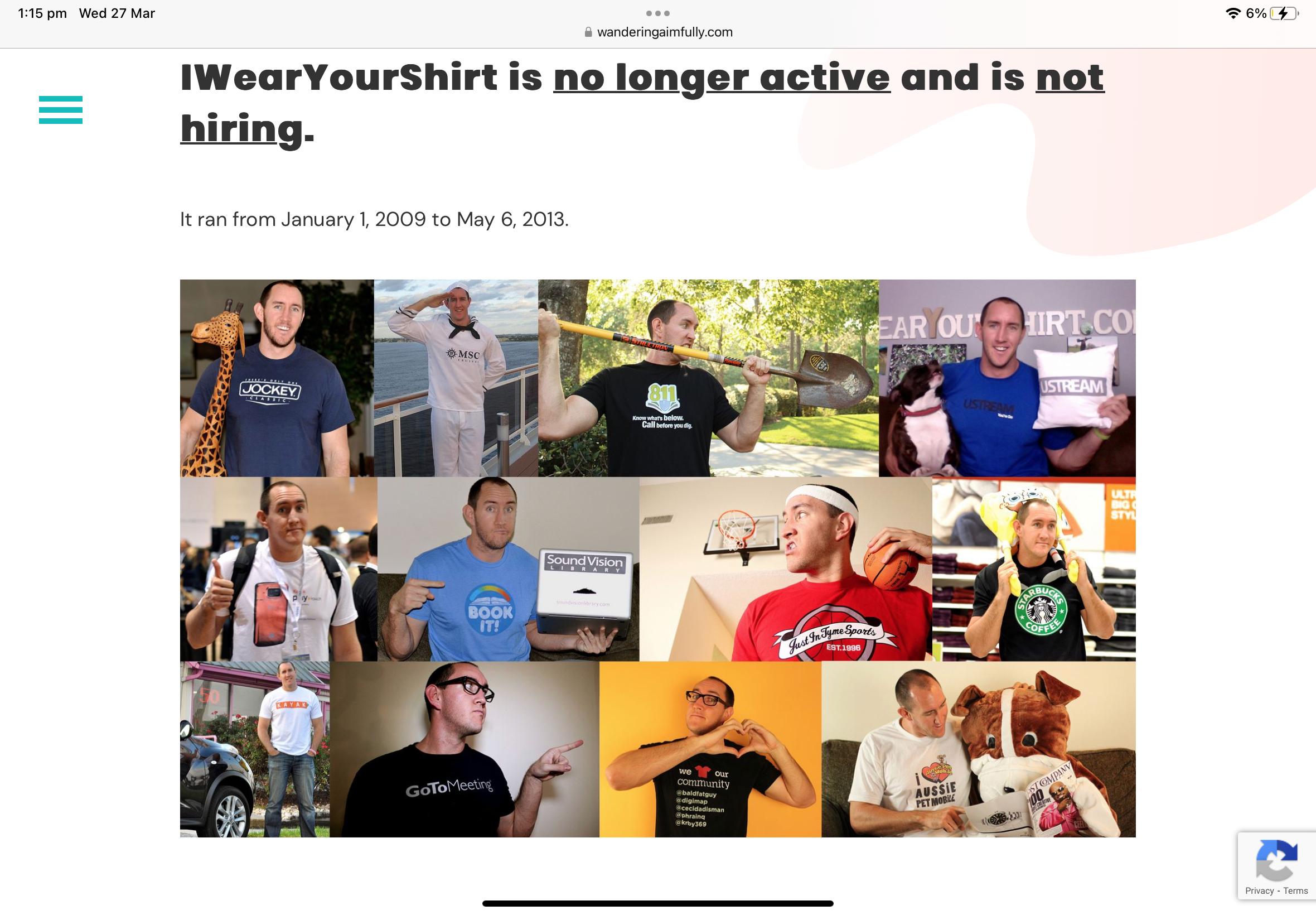 Jason Sadler
Jason Sadler
Direct-to-consumer(DTC)marketingreferstoany tacticsusedtopromoteproductsdirectlytoconsumers versusthrougharetailbusiness.AbrandlikeEverlane, forexample,couldworkwithbrandslikeWalmartor Amazontopromoteitsproducts.Instead,itadvertises itsproductstopotentialcustomers,completelycutting outthemiddleman.
Youwanttohavecontroloverhowyourproductand brandarerepresentedinthemarket.MarketingDTC productsistheuniqueintersectionofyourvalue proposition,branding,andmessagingthatnooneelse cancompetewith.
LexieBecker,abrandpartnershipspecialistatFifth& Cor,aShopifypartner,explains,“Youcanapproach marketinginwhateverwayyouchooseanddrivesthe mostsaleswhilecreatingaloyalcustomerbase. Customersaren’tcomparingyoutowhoissittingnext toyouonashelf.They’relookingatyouandhowyou canbenefitthem.”
BusinessmodelsthatoperateDTCofferthe opportunitytomaintainhigherprofitmargins.By producingandmarketingyourownproduct,youkeep moremoneyinyourbusinessratherthansendingitto suppliers.
In today’s crowded marketplace, it’s becoming increasingly difficult for brands to stand out and connect with their target audience. Storytelling provides a way for companies to create a lasting emotional connection with their customers by tapping into their hopes, fears, and desires.
In the world of marketing, storytelling is a powerful tool that brands can use to connect with their customers on a deeper, emotional level. By telling relatable and inspiring stories, companies can create a connection with their audience that goes beyond the product or service they offer.
Dove’s ‘Real Beauty’ campaign tells the story of how real women should embrace their natural beauty. The campaign uses real women with diverse body types and skin tones and focuses on their stories and struggles. This story resonated with customers and helped Dove become a leader in the beauty industry.
To quote Maya Angelou, “I’ve learned that people will forget what you said, people will forget what you did, but people will never forget how you made them feel.” This is the essence of storytelling in product marketing: create an emotional connection with customers that lasts beyond the transaction.
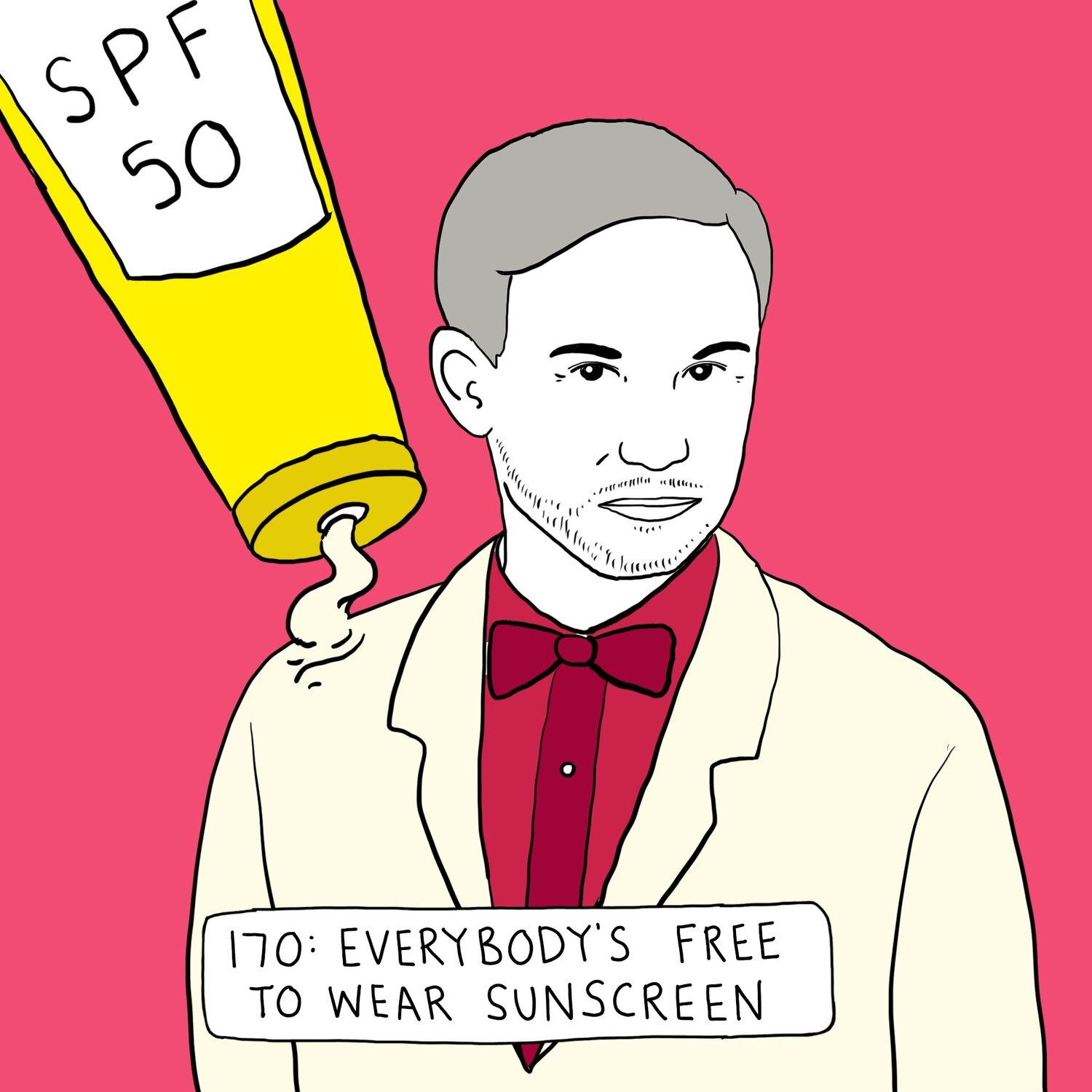
The basis of the song is an essay written as a hypothetical commencement speech by Mary Schmich and was originally published in June 1997. The essay gives various pieces of advice on how to live a supposedly happy life. Film director Baz Luhrmann took the essay and transformed it into a single that reached number one in the United Kingdom. Lockdown was a time of intense isolation and loneliness and it felt as if any notion of ‘self-help’ was the only source of comfort and motivation. Lockdown created an environment in which we had to look within ourselves as it was far easier than reaching out. To this day, I feel the humanity and the humility of the simple but effective words, words that truly incapsulate the messiness of what it means to be human. They are words that encourage us to take a deep breath in and reexamine what it is that we can control and can’t control within our own lives. It is a song about surrendering to the messiness and unpredictability that is thrown our way and an attempt to find moments of beauty and comfort within ourselves and through our connections with others.
The song opens with the importance of wearing ‘sunscreen.’ Framed within the narrative of a public health announcement, the voice relays just how vital wearing sunscreen is. This fact is undisputed in its universality. It seems like such an obvious piece of advice, yet as the voice continues to speak we become aware of what the rest of the track will address, ‘Whereas the rest of my advice has no basis more reliable than my own meandering experience.’ The song begins to touch upon the bizarre and chaotic nature of the experience of living, yet it does so in such a human way. The very words themselves incapsulate what it means to be human, to live a life that is often messy and chaotic, full of nuance and contradiction.It heightens awareness, so much so that it moves beyond the realms of the tacky selfhelp song and becomes an encapsulation of what it means for somebody to experience life in such an individual and nuanced yet at the same time highly universal way. Towards the end of the final verse, we hear the words,‘Advice is a form of nostalgia, dispensing it is a way of fishing the past/From the disposal, wiping it off, painting over the ugly parts/And recycling it for more than it’s worth.’
It is this part in particular that resonates; the song is so conscious about what it means to impart wisdom and how that wisdom will be received. The cleverness of the song lies within this self-consciousness. It is aware of what it means to give advice and how that advice will be interpreted and skewed to accommodate simultaneously the universal as well as the singular experience.
This self-consciousness and self-awareness is further found when the voice states the lines, ‘Remember compliments you receive, forget the insults/If you succeed in doing this, tell me how’ It is because of these moments of heightened humility and awareness, that I find myself able to connect with the words. At the very same time that the song gives advice, it aligns itself with the very notion that by being a person means that there is no one way to live a life, no one way to take on advice and utilize it and there is no one way to feel. The song creates a thoughtful space of reflection, where the words themselves simultaneously give guidance yet have an understanding of what it means to be human in a life that is so full of different experiences. It allows for a deliberation upon the chaos, the anxieties and the insecurities that everybody feels at some point or other. It doesn’t attempt to gloss over the parts of being human that we are encouraged to hide on a daily basis, but creates a space in which these parts, these anxieties, worries, fears and apprehensions can be reflected upon.
For me, it is a song that celebrates the moderate. It is a song about understanding what it means to have moments of fear and chaos but knowing that they never last. ‘Whatever you do/ don’t congratulate yourself too much or berate yourself either/Your choices are half chance, so are everybody else’s’. Hearing these words offer a certain degree of release. We cannot control everything that happens and there is no point in trying.
Sensory marketing develops content around the senses of sight, sound, touch, smell, and taste. It can elevate and intensify brand perception. The marketing technique is effective in capturing the attention of an audience and making your brand memorable.
In today’s competitive environment, sensory marketing helps brands trigger emotion and maintain engagement. It places the customer experience at the forefront and helps companies make customer interactions more compelling and meaningful.
One of the most powerful forces of human nature is emotion. You must make an emotional appeal if you want customers to believe in your brand. By evoking feelings in a person, you can win their attention successfully.
Today, consumers wish to build personal connections with the brands they shop from and develop meaningful relationships with them over time. The most successful marketing campaigns establish a connection with people on matters of importance – their pain points, values, and personal feelings.
The goal behind blending emotion with marketing sense is to convince the viewer to complete an action, whether it is to sign up for the subscription list, buy a product, join the community, fill out a form and so on. Generally, emotional marketing efforts focus on one specific emotion.
People’s sense of sound is always active, even while sleeping. It is not possible to “turn off” the ability to hear. According to studies, people find music pleasing. It helps their body release dopamine, which inclines them to make a purchase.
Music impacts the mood and the perceived value of customers. Brands must choose music wisely. It reflects the brand’s values and determines the marketing message. Varying pitches, tones, tempos, and volumes can impact consumer perception.
The most common ways of adding sound to sensory marketing campaigns nowadays are through sound effects, voiceovers, audiobooks, podcasts, etc. Audio clips capture your audience through a storytelling moment.
Sight is one of the most developed senses to use in the world of advertising. Brands can easily engage consumers by making the most of this marketing sense. The sense of sight has a vital role to play in key retail moments, like influencing the customer to enter the shop. Moreover, it is responsible for transmitting the brand’s values and image.
When engaging the sense of sight, brands must think through everything the customers will see. Remember to pay attention to not only what they’ll see but also how they’ll see it. A good aesthetic of advertising visuals can spark the creation of images in individuals.
Brands must consider two vital aspects while adding a sense of sight to their sensory marketing campaigns. The objective is to attain positive perception toward the brand. The elements to look into when choosing visuals include their positioning and orientation in space, the range of their movement, and their content, such as shape, color, and size.


A podcast company called SXM Media and Edison Research released their Gen Z Podcast Listener Report for 2023, which investigates the podcast consumption and related purchasing habits of US individuals ages 13 to 24.
Gathered from 1,000+ interviews, the demographically adjusted data provides insights for marketers targeting this diverse audience.
Gen Z podcast listeners are a “massive opportunity” for brands and advertisers, according to the report, as they are consuming podcasts in larger numbers with nearly half (47%) having listened to a podcast within the last month.
That’s more than how many US podcast listeners aged 12 and above listen to podcasts monthly on a wider scale (42%).
Not only is the reach high with Gen Z podcast listeners, they’re also likely to take action after listening to an ad, with 43% of listeners aged 16 and up purchasing a product afterwards and 44% of listeners between 13 and 17 asking someone to buy a product for them. While host-read ads are most popular with Gen Z listeners (with 84% saying they find them useful), brands can still reach them via sponsorship messages or prerecorded advertisements as at least 76% of respondents finding these formats useful as well.
“Gen Z actually finds utility in podcast ads and will actively seek out more information or even buy the brands they hear,” the report said. “They are key drivers of the creator economy, and they’ll actively support the brands that back their favourite creators and shows.”

I felt a good way to gather this information was to undergo some primary research on Chester university students who identify as Gen Z. I spoke to 5 broad individuals on campus to figures this out.
Amy Walker was kind enough to be the first student to go first and answer some questions about podcasts.
When asked what attracted her to podcasts, she responded that she liked that they had the ability to simultaneously feel like “you’re doing something productive” while also being entertained. Among other things, she liked the wide range of subjects and genres that they could cover and their very “intimate and personal” feel to them.
Her sentiments were backed by other students as well, but the most prominent theme that kept coming up was the latter.
In her interview, Amy spoke about how during lockdown she felt very lonely, ‘podcasts were a source of comfort to many which has just stuck with this generation ever since’. She mentioned that as a listener, podcasts can make you feel as though you are having conversations with others.
More specifically though, Amy speculated that a reason for the podcast’s popularity was the feeling of connection between the audience and creator. She said, “you kind of get attached to people and their voices” and joked about feeling as though she were friends with her favorite hosts.
The other three interviewee’s all shared the same views and This viewpoint was matched by James Smith who, somewhat cynically, said that “our generation are all lonely and sad and hearing people’s voices makes us think we have friends” .


.
In the latest trends report for 2024 from Dentsu Creative, the agency has highlighted self-care as the first movement that’s expected to make big waves this year for both the brands and the creatives who propel the industry. “We are already seeing brands advocating selfcare now,” Dentsu Creative Philippines Chief Creative Officer Jerry Hizon shared. “This is a reflex response to the pre-pandemic push of hustle culture and startup disruption. Then, the pandemic forced us to look at our priorities. That’s why as a generation, Gen Z is rejecting this and advocating for a slower, gentler work culture,”.
Gen Zers are able to explore all the self-care practices they want to in order to replenish their energy and zest for life. They understand that there’s no cookie-cutter approach to self-care, so they’re open to try out different things that make them feel invigorated. Skincare regimens would be a good example of this. The act of massaging the products onto their skin, applying a face mask and admiring their healthy, glowy complexion are productive yet relaxing ways for them to spend their evenings after work. Skincare has become part of their routine, which these concerned working adults pay close attention to. Along with these nightly self-care rituals, they also do “everything showers” which involve exfoliating, shaving, and masking in one go.
Self-care isn’t selfish. By tending to our needs, we are able to grow into the best version of ourselves, live a soft life filled with treasured memories, and show up ready for everything we put effort into. After all, we are our own best and most important investment.
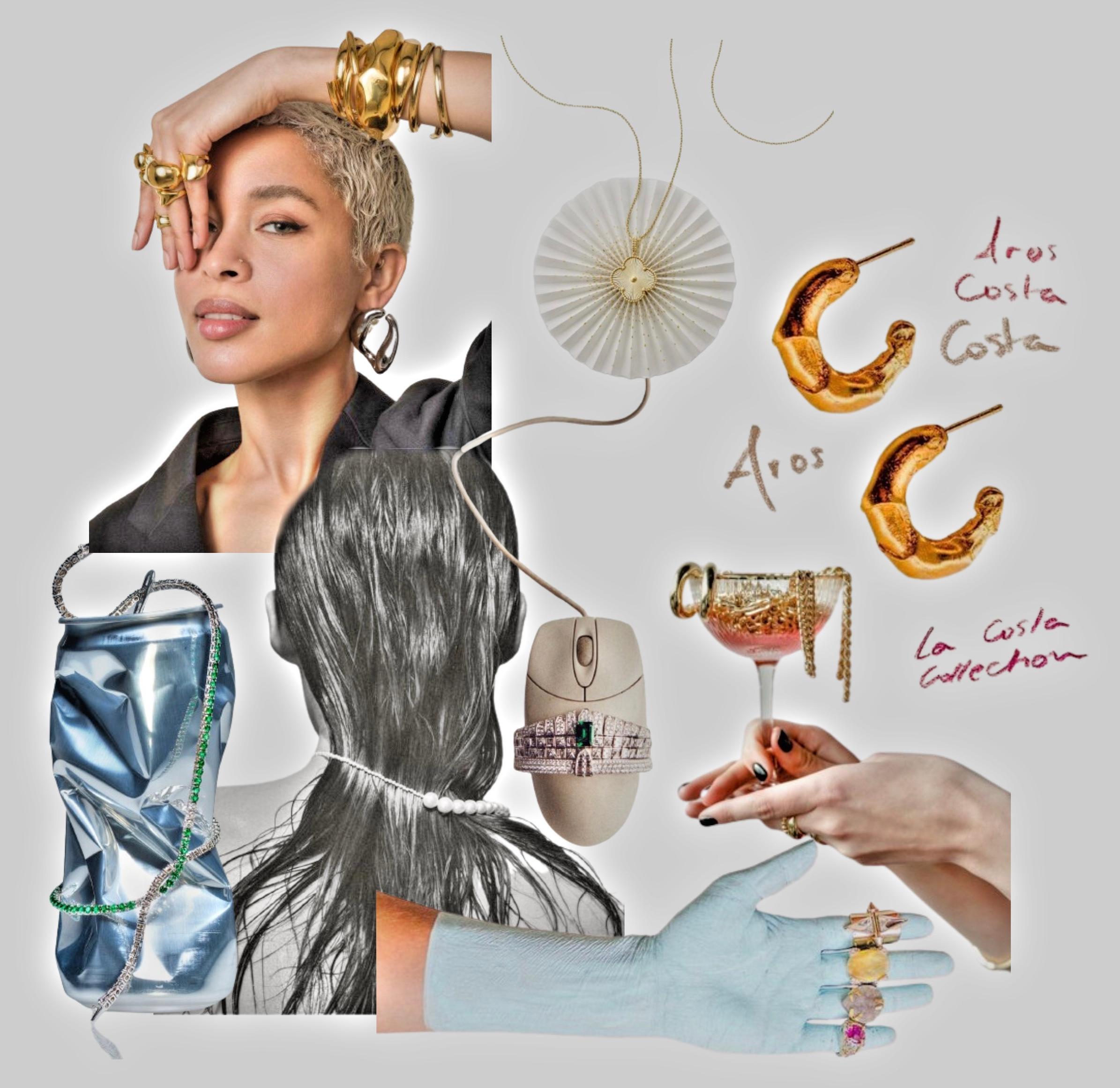 Jewellery
Jewellery
Gen Z jewellery consumers are more frequent shoppers, and are trend-orientated, identity-driven and digitally engaged. They value the ability to build a jewellery wardrobe they can choose from to express their identify.
jewelry has transcended its traditional roles of adornment and luxury. It has become a powerful tool for self-expression and personal branding in the digital age.
From curated Instagram feeds to meticulously crafted online profiles, individuals are using jewelry to tell their stories, showcase their values, and project a desired image. This trend is particularly evident among the millennial and Gen Z generations, who are known for their digital fluency and desire for individuality.
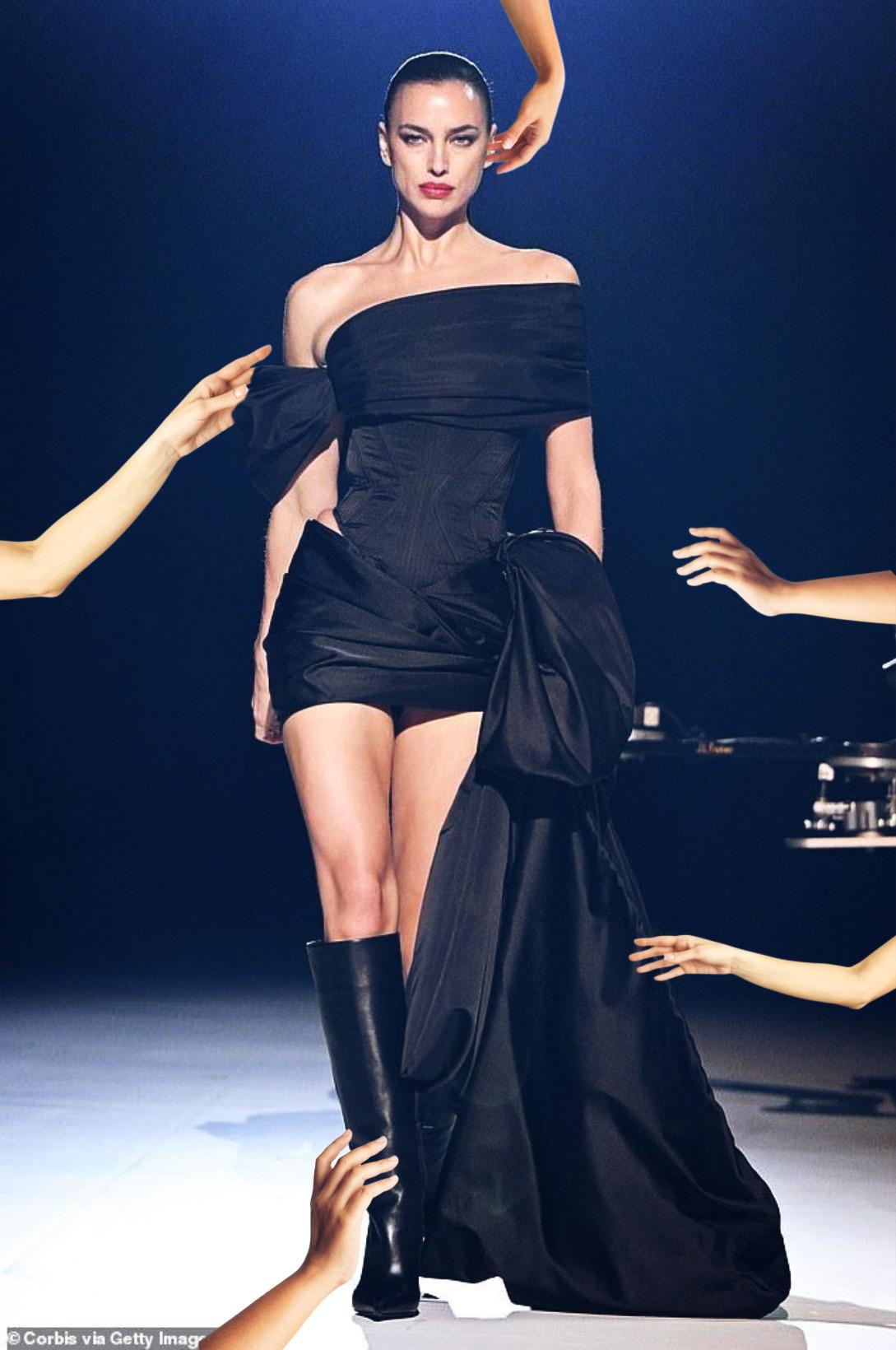
Despite the chain of models flowing up and down the runway, fashion shows are a very chaotic endeavor to produce. Behind the scenes, there’s an army of people working frantically to make sure the show goes off without a hitch. It takes months of preparation, tons of hard work, and an experienced hand (or two) to coordinate it all.
Even Carolina Herrera admitted fashions shows aren’t all glitz and glam. As she told Vogue, “The fashion shows are so fabulous, but you go backstage and you see what is really happening: You see the work.”
A fashion show backstage is packed with models, designers, managers, stylists, makeup artists, hairdressers, publicists, and other fashion elite who are there to ensure the show must go on.
All about lifestyle brands: 4 elements of Lifestyle Brands - 2024. MasterClass. (n d )
https://www masterclass com/articles/lifestyle-brands
Anderson, M (2023, May 8) Council post: Connecting with gen Z: Effective strategies for brands. Forbes.
https://www.forbes.com/sites/forbescommunicationscouncil/2023/05/05/conn ecting-with-gen-z-effective-strategies-for-brands/?sh=714c85aa1bab
Baz Luhrmann - Everybody’s free to Wear Sunscreen. YouTube. (2007, May 25).
https://youtu.be/sTJ7AzBIJoI?si=H7Z5rvRwl8oJiPyn
Brad Brenner, Ph. D. (2024, February 22). The Psychology of Cancel Culture: Impacts on Mental Health Therapy Group of DC
https://therapygroupdc.com/therapist-dc-blog/the-psychology-of-cancelculture-impacts-on-mentalhealth/#:~:text=Cancel%20Culture%20and%20Opportunities%20for%20Growth &text=This%20lack%20of%20space%20for,more%20inclusive%20and%20empa thetic%20viewpoint.
Goldman, J. (2023, June 5). Gen Z loves podcasts-and considers them far less toxic than social media. EMARKETER. https://www.emarketer.com/content/genz-loves-podcasts-and-considers-them-far-less-toxic-than-social-media
How to create a film storyboard: 2024 step-by-step guide. Milanote. (n.d.-a).
https://milanote com/guide/film-storyboards
How to create a film storyboard: 2024 step-by-step guide Milanote (n d -b)
https://milanote.com/guide/film-storyboards
The impact of educational content on social media. Veggies From Mexico. (n.d.).
https://veggiesfrommexico.com/other-news/the-impact-of-educationalcontent-on-social-media/
Kenan, J (2024, February 2) 7 examples of influencer marketing campaigns
Sprout Social.
https://sproutsocial.com/insights/influencer-marketingexamples/
Learn more about IWEARYOURSHIRT and how I made $1,000,000. Wandering Aimfully. (2023, March 6).
https://wanderingaimfully.com/iwearyourshirt/
Leslie, J. (2023, February 3). Tiktok & Education: How Tiktok is Transforming Education for gen Z. Fanbytes. https://fanbytes.co.uk/tiktok-andeducation/
Makari, R. (2023, June 2). Gen Z podcast engagement is “Off the charts”, SXM Media Report shows PodPod
https://www.podpod.com/article/1824985/gen-z-podcast-engagement%E2%80%9Coff-charts%E2%80%9D-sxm-media-report-shows
What is product placement, why does it matter and how to get it: AOF. Accion Opportunity Fund. (2024, February 2).
https://aofund.org/resource/product-placement-why-it-matters-and-howget-it/ Wikimedia Foundation. (2022, December 17). I wear your shirt. Wikipedia.
https://en.wikipedia.org/wiki/I Wear Your Shirt#:~:text=I%20Wear%20Your %20Shirt%20was%20founded%20by%20Jason%20Sadler%20of,without% 20actually%20%27working%27%22.
Woffenden, M. (n.d.). 5 key ways to manage generation Z in the Workplace. Lucy Walker Recruitment. https://blog.lucywalkerrecruitment.com/5-keyways-to-manage-generation-z-in-theworkplace#:~:text=Gen%20Z%20are%20ambitious%20individuals,employe es%20ownership%20over%20their%20projects.
15 benefits of podcasting: Why you must start a podcast. Riverside. (n.d.). https://riverside.fm/blog/benefits-of-podcasts
Ferrer, S. (2024, January 26). What we can learn from millennials and Gen Zers on self-care. adobo Magazine Online.
https://www.adobomagazine.com/insight/the-secret-to-happiness-whatwe-can-learn-from-millennials-and-gen-zers-on-self-care-work-lifebalance-and-living-a-soft-life/#
Helmer, V. (2020, February 9). What happens backstage at a fashion show?. LiveAbout. https://www.liveabout.com/what-really-happensbackstage-at-a-fashion-show2379347#:~:text=A%20fashion%20show%20backstage%20is,around%20t o%20document%20the%20event.
Varney, W. (2023, September 18). TikTok vs. Instagram: 6 major differences for your brand. Convince & Convert.
https://www.convinceandconvert.com/social-media/tiktok-vs-instagram6-important-factors-forbrand/#:~:text=Instagram%20is%20better%20for%20polished,a%20you nger%20audience%2C%20consider%20TikTok.
Waldow, J. (2024, April 9). TikTok is pushing brands to post photos instead of videos. Modern Retail.
https://www.modernretail.co/technology/tiktok-is-pushing-brands-topost-photos-instead-ofvideos/#:~:text=It’s%20found%20that%20Carousel%20posts,and%20ha s%206.6%20million%20views.